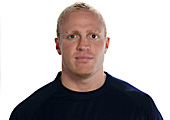 Speed and power are the most important components in becoming a successful hockey player. Plyometric hockey training can be used to build both of these factors, and to improve your performance on the ice. Plyometrics focuses on making the muscles contract more quickly and with more power. This translates into stronger, faster legs and a longer stride length which means you can cover the ice more effectively than in the past.
Speed and power are the most important components in becoming a successful hockey player. Plyometric hockey training can be used to build both of these factors, and to improve your performance on the ice. Plyometrics focuses on making the muscles contract more quickly and with more power. This translates into stronger, faster legs and a longer stride length which means you can cover the ice more effectively than in the past.
These drills do not only build muscle, though. They are favored by athletes who are looking to build power and strength because they also teach the nervous system to fire muscle movements in a more effective way. This makes the muscles more efficient.
Plyometric Hockey Training Drills
The drills used in plyometric hockey training, known as plyometrics, consist of exercises that use quick, explosive movements. This can include jumping, bounding and sprinting drills that do not require any exercise equipment, or they can use equipment such as medicine balls, resistance bands or small, low-weight hand weights.
Plyometrics can be done up to three times a week during hockey season and up to four times during the off-season. More frequent workouts do not give the muscles time to recover between training sessions. The drills should not cause fatigue, and reps should be limited if fatigue begins to set in.
Having a coach or personal trainer demonstrate the plyometrics and supervise workouts is important, because form is especially crucial to prevent injury with these drills. If you have any concerns about plyometrics or if one of your players is interested in plyometric hockey training, the staff at Hockey Online Training can help you find a program that works for your needs.
Plyometric Exercises
The lateral jump is the basis for many plyos designed for hockey players. It is a single-leg exercise that imitates a player’s body position and leg movement during a stride on the ice. It builds strength and power in each leg individually, meaning a young player’s muscle imbalances will not slow his training.
Once you can perform lateral jumps easily and with proper form, you can increase your height and distance. One way to do this is to jump over an increasing number of hurdles, boxes or other obstacles. This can be done with a break between each jump, or a series of jumps before a break. As the season approaches, there should be less time between jumps and minimizing the time the feet are on the ground should be a primary goal of workouts.
Lateral jumps should be practiced on both legs, in addition to other unilateral drills and bilateral plyometrics. Exercises that use both legs at the same time, called bilateral drills, build strength and power in the hips in addition to the legs. Popular two-leg plyometrics include squat jumps and box jumps.
Plyometrics are effective exercises to build the power, strength and speed needed in hockey. They can be used during the off season to stay in shape and as a part of regular training during the season. We at HockeyOT offer plyometric workouts for hockey players and more information on online training on our website.














